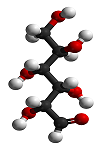
This invention is based upon the discovery of a new mechanism for atmospheric nitrogen fixation to nitrate by thermal treatment of titanium dioxide (TiO2) in the presence of air and in the absence of light (photocatalytic reactions are not involved).
Nitrogen fixation is a process by which nitrogen (N2) in the atmosphere is converted into ammonia (NH3) or nitrate (NO3). Although the atmosphere is 78% nitrogen, it is nutritionally unavailable as it is relatively inert. Nitrogen must be fixed through a natural or man-made process. In addition to biosynthesis nucleotides for DNA and RNA and amino acids for proteins, nitrogen is important for agriculture and the production of fertilizer.
Biological nitrogen fixation makes up about 65% of the world’s annual nitrogen fixation, and industrially produced nitrogen fertilizers, primarily produced by the Haber-Bosch process, accounts for 25% of the total annual nitrogen fixation. The Haber-Bosch process has a relatively high operational cost, operates at relatively high temperatures and pressures, and depends on non-renewable and depleting sources of energy.
Nitrate form by this newly discovered method has been analyzed for isotopic composition (δ18O and δ15N) was found to have a signature that is distinguishable from photo- and bio-fixed nitrate.
This promising process has an important implication for commercially produced fertilizers, particularly as it is relatively inexpensive, and environmentally friendly method, with recyclable titanium dioxide that can be reused many times to produce large quantities of fertilizer. In addition, this process is non-toxic making it safer to use than the catalysts typically used for the Haber-Bosch process (The Haber-Bosch process is presently the only available, non-biological technology that has been used commercially).
This novel process for non-biological fixation of nitrogen to form nitrate, operates in lower temperatures, between 50ºC and 200ºC, making it more efficient than traditional methods.
In addition to its commercial implication for producing fertilizers, this mechanism can partly explain the presence of high levels of naturally occurring nitrate found in arid subsoil. TiO2, a common soil constituent and a semi-conducting material, can produce nitrate by sunlight heating, where nitrate was observed at 50ºC, a temperature that is available under sunlight irradiation in the dry areas. It is noteworthy to mention that large pools of nitrate have been found in remote arid lands in different parts around of the world, including those discovered relatively recently in the NE Badia of Jordan).
We plan to utilize the nanotechnology to make thin films (nano-films) of TiO2 to further reduce TiO2 used in this process and increase nitrate yields for commercial use (fertilizer). This process has the potentials to replace the conventional techniques currently used in production of fertilizers, particularly as this method is relatively inexpensive, safer, environmental friendly with recyclable TiO2.
Nitrogen fixation is a process by which nitrogen (N2) in the atmosphere is converted into ammonia (NH3) or nitrate (NO3). Although the atmosphere is 78% nitrogen, it is nutritionally unavailable as it is relatively inert. Nitrogen must be fixed through a natural or man-made process. In addition to biosynthesis nucleotides for DNA and RNA and amino acids for proteins, nitrogen is important for agriculture and the production of fertilizer.
Biological nitrogen fixation makes up about 65% of the world’s annual nitrogen fixation, and industrially produced nitrogen fertilizers, primarily produced by the Haber-Bosch process, accounts for 25% of the total annual nitrogen fixation. The Haber-Bosch process has a relatively high operational cost, operates at relatively high temperatures and pressures, and depends on non-renewable and depleting sources of energy.
Nitrate form by this newly discovered method has been analyzed for isotopic composition (δ18O and δ15N) was found to have a signature that is distinguishable from photo- and bio-fixed nitrate.
This promising process has an important implication for commercially produced fertilizers, particularly as it is relatively inexpensive, and environmentally friendly method, with recyclable titanium dioxide that can be reused many times to produce large quantities of fertilizer. In addition, this process is non-toxic making it safer to use than the catalysts typically used for the Haber-Bosch process (The Haber-Bosch process is presently the only available, non-biological technology that has been used commercially).
This novel process for non-biological fixation of nitrogen to form nitrate, operates in lower temperatures, between 50ºC and 200ºC, making it more efficient than traditional methods.
In addition to its commercial implication for producing fertilizers, this mechanism can partly explain the presence of high levels of naturally occurring nitrate found in arid subsoil. TiO2, a common soil constituent and a semi-conducting material, can produce nitrate by sunlight heating, where nitrate was observed at 50ºC, a temperature that is available under sunlight irradiation in the dry areas. It is noteworthy to mention that large pools of nitrate have been found in remote arid lands in different parts around of the world, including those discovered relatively recently in the NE Badia of Jordan).
We plan to utilize the nanotechnology to make thin films (nano-films) of TiO2 to further reduce TiO2 used in this process and increase nitrate yields for commercial use (fertilizer). This process has the potentials to replace the conventional techniques currently used in production of fertilizers, particularly as this method is relatively inexpensive, safer, environmental friendly with recyclable TiO2.

